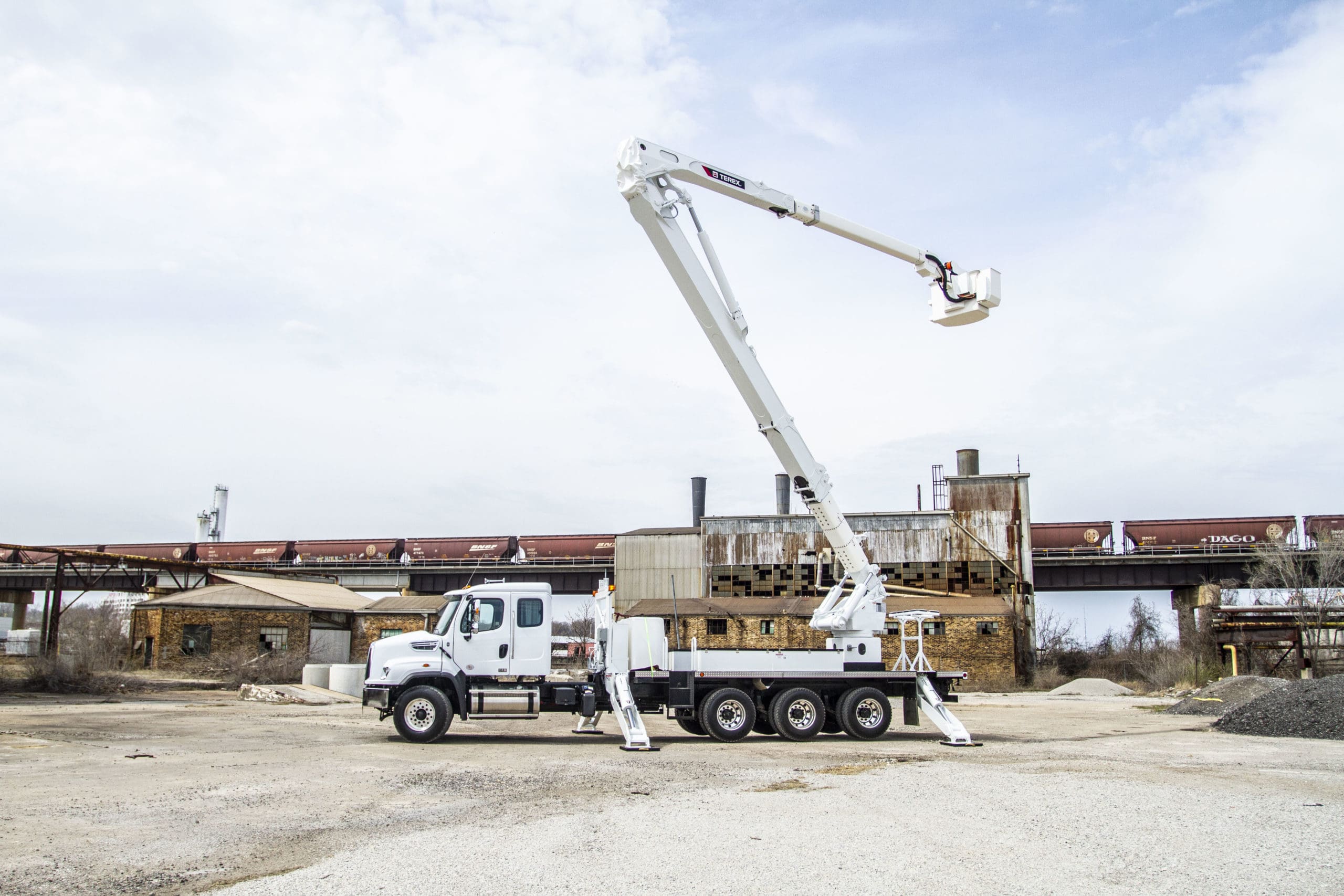
According to the US Bureau of Labor Statistics’ data, some of the most common safety violations on construction, forestry, agriculture, utility, and other job sites in 2019 were:
- Inadequate fall protection
- Inadequate fall protection training
- Unsafe ladders
- Unsafe scaffolding
- Electrocution
These prove just how indispensable aerial work platforms (AWPs) are for raising workmen off ground to do aerial work with maximum safety. It’s also why projections predict that 500,000 units will sell worldwide by the year 2026.
Types of Bucket Trucks
Bucket trucks are a quintessential product line in the AWP inventory of boom lifts, scissor lifts, vertical mast lifts, cherry-pickers, etc. They’re designed for the sole purpose of raising workmen up in “buckets” from which they do their jobs with the tools they take up with them.
When it comes to purchasing a bucket truck, there are several options in the market to match specific applications. Body type, platform height, side reach capabilities, telescopic booms, weight capacity, fuel type, and transmission should all be considered. One primary attribute to consider is whether the truck has an insulated or non-insulated bucket.
Non-insulated bucket trucks offer all the safety and functionality you need to lift workmen with a telescopic, articulated, overcenter or non-overcenter boom. However, they do not keep crew members safe from electrocution.
In most jobs, that bit of precaution isn’t necessary. Many jobs don’t involve working with energized power lines or being close to any power source. For example, a forestry bucket truck working on trees in a wooded area won’t require insulation.
However, if that same job was being performed in a place where trees have fallen on electric poles or are close enough to one to pose danger, a person in a bucket cutting them away could be accidentally electrocuted.
Insulated buckets ensure that doesn’t happen.
Insulated Buckets
Two parts of an insulated bucket truck, the bucket itself and the boom, have a dielectric fiberglass coating. This prevents electricity from flowing through the boom, damaging the equipment, or potentially electrocuting the operator. Typically, a boom has 3 insulating areas: one in the lower boom, one in the upper boom, and one in the bucket liner. All have different insulation ratings.
The fiberglass component certainly raises the price of the unit, whether it be new or used. But for industries like utilities, where linemen are repairing and maintaining power lines, the safety is well worth the price.
Insulated Bucket Truck Safety
Remember, though, that even if an insulated bucket is the most safety that engineering can offer you when working close to power sources, there are certain steps you have to take to make sure the unit is working optimally.
First, always ensure that the boom is clean, as some kinds of debris sticking to it can conduct electricity. Second, the fiberglass components have to be checked out periodically to ascertain that they are still dielectric. Professionals with special expertise and testing equipment will perform these tests. Follow the instruction manual carefully because you’re dealing with electricity – and you’re dealing with lives.
To learn more about bucket trucks before you purchase one, check out our exhaustive Buying Guide by clicking HERE.
If you’re ready to rent or buy new or used bucket trucks, contact Custom Truck One Source, the first, true single-source provider of specialized truck and heavy equipment solutions in North America, by clicking HERE.

